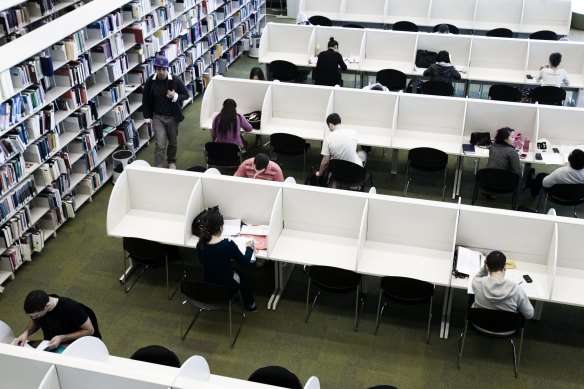This was published 5 months ago
Opinion
Albanese’s HECS relief won’t fix the core problem – the fees system is broken
George Williams
Vice chancellor of Western Sydney UniversityThe prime minister has committed to a trifecta of reforms to address student debt. Graduate repayments will begin at a higher income level, current debt will be cut by 20 per cent and the indexation of student loans will be untied from high inflation rates. These welcome changes will significantly ease cost-of-living pressures for graduates. However, they do not deliver immediate relief for students and they do not address the root cause of the problem. The system for setting university fees in the first place is broken and unfair. It needs urgent reform.
University study should not mean skipping meals, but too often it does. The price of knowledge should not be so great that it limits the borrowing power of graduates, preventing them from getting a home loan. And the cost of a three-year arts degree should not mean accruing a debt you can never pay off.

Students were going hungry, so Western Sydney University opened a free food pantry. Credit: Louie Douvis
The price of public university degrees for Australian students is set by the government. Governments have said that students should contribute to the cost of their studies. This is fair because a university degree is a ticket to higher wages and better jobs. In 1989, the Hawke government introduced the Higher Education Contribution Scheme. Students paid $1800 per year, no matter the course studied. The Howard government introduced differential course fees in 1996. This recognised that graduates in fields such as business and law had a much greater earning potential and so it was reasonable to charge them higher fees.
The system went off the rails in 2021 with the Morrison government’s Job-ready Graduates Package. It removed the link between fees and graduate earnings and sought to influence student choice by altering course prices based on government priorities. The idea was that a strong price signal would steer students away from the arts and humanities and into areas of national labour shortage such as maths, agriculture and nursing.
The policy failed. It revealed a fundamental misunderstanding of how students choose what to study. A student passionate about philosophy is not likely to shift to maths, and indeed price has not proved to be a major determinant of choice. One study found that fewer than one in 50 students had changed their field of study. Instead, students stuck with higher fees and debt, or chose not to study at all.
The Job-ready Graduates Package introduced deep unfairness. One perverse outcome was to put arts degrees covering areas such as history into the highest fee category, despite these graduates earning the lowest incomes and often coming from the most disadvantaged parts of society. An arts student today will incur a debt of more than $50,000 for three years’ study. Some will never earn enough to pay this off, effectively incurring a debt until death.
A report released on Friday by the Australia Institute starkly illustrates this unfairness. The annual cost of an arts degree is now nine times the original 1989 contribution, a rate way above inflation. Fees have increased from one-third of the salary earned by an arts student on graduation to more than two-thirds.
Collectively, student debt has reached astronomical heights at more than $81 billion. The government now collects far more from student debt repayments than it does from the gas industry through the petroleum resource rent tax. The pledge to reduce existing student debt by 20 per cent will help, but it will do nothing for new students facing inflated fees.
At the same time, cost-of-living pressures are having a huge impact on young people. The proportion of students having to support full-time study with full-time work has increased by 50 per cent since 1989.
Students are also taking longer to pay off their debt, now 10 years on average. Delaying repayments to higher income levels will further slow this, meaning graduates will increasingly hold student debt as they face other financial challenges, such as securing a home loan or starting a family. Wiping $5520 from the average graduate debt of $27,600 will make a meaningful difference, but again it will deliver nothing for new students.
The overall unfairness of student fees is strikingly at odds with the rising problem of student poverty. Many students at our university, Western Sydney University, are reporting that they cannot afford to eat and study. Too many are giving up on their dreams of a university education and a better life. We have responded by opening a free pantry that provides staples such as rice and oats. To keep our students in study, we need to meet both their food and education needs.
The deep problems with student fees are well known. They were called out earlier this year in the Universities Accord final report. It found that the student fee structure needs to be replaced. Unfortunately, there is no sign yet that the government has heeded this call. It is focused only on the rate at which these unfair and disproportionate debts are being repaid. This needs to change if we are to have a higher education system that values equity and opportunity for all.
George Williams is vice chancellor of Western Sydney University.
More from Campus, our higher education hub
Which degrees will lead to the highest pay packets?
Six months ago these HSC students picked their degrees. Did they make the right choice?
Where to start when you don’t know what career you want
Feeling overwhelmed by uni applications? Here’s what year 12 students need to know
Search for uni courses using our interactive tool
Get a weekly wrap of views that will challenge, champion and inform your own. Sign up for our Opinion newsletter.